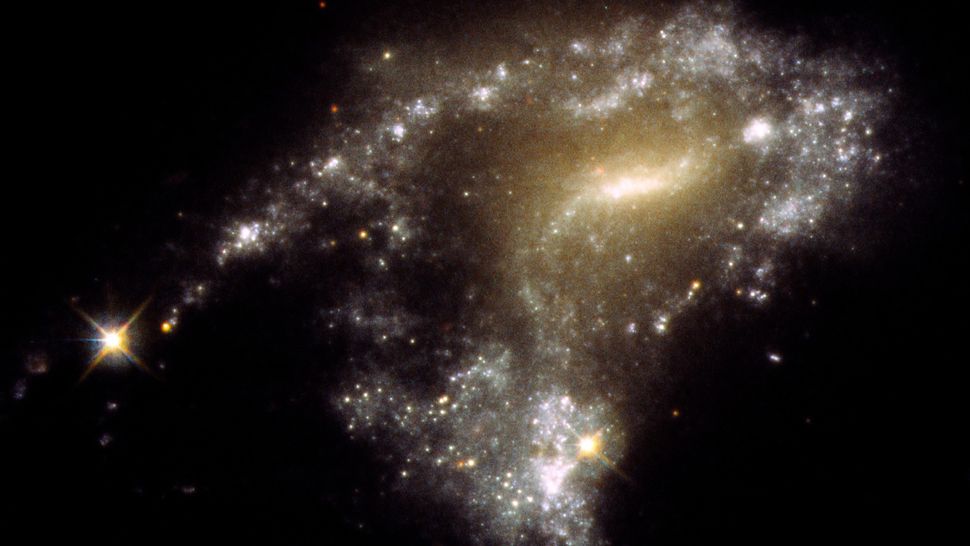Hubble Space Telescope tells a starry 'tail' of 12 mingling galaxies
By Keith Cooper published about 10 hours ago
Massive star clusters brimming with giant, luminous blue stars are forming in the unraveled wreckage of interacting galaxies.

blurry sparkles of white and yellow cluster to form a blurry galaxy
An example of one of the galaxies with a tidal tail imaged by the Hubble Space Telescope. This is the galaxy AM 1054-325, which is 173 million light years away. (Image credit: NASA/ESA/STScI/Jayanne English (University of Manitoba))
The Hubble Space Telescope has stepped on the tails of 12 interacting galaxies and found them to be studded with the shining diamonds of young star clusters —scientists compare the phenomena to cosmic "strings of pearls."
When spiral galaxies interact, either through direct collision or close encounter, their spiral arms unravel. The gravitational force that a galaxy wields is vast, so when two galaxies become close, the gravitational tides that are raised tug on those spiral arms, pulling them out to form long "tails" that can stretch for many tens of thousands of light-years.
Now, astronomers led by Michael Rodruck of Randolph-Macon College in Virginia, U.S. have used Hubble images of 12 interacting galaxies spread across seven different interacting systems to identify 425 young, but massive, star clusters dotting those galaxies' tidal tails. Each cluster contains about a million young, blue stars that emit plenty of ultraviolet light. By consulting archival ultraviolet observations of the galaxies, provided by NASA's Galaxy Evolution Explorer (a mission that operated between 2003 and 2012) and the Swift mission, Rodruck's team was able to determine the galaxies' star-formation rates.
Because spiral arms are loaded with gas and dust, when they are pulled out to form a so-called tidal tail, that gas and dust becomes stirred up. This, in turn, can ignite a firestorm of star formation. Hence, tidal tails can become the most intense star-forming regions in a galaxy.
More:
https://www.space.com/hubble-space-telescope-star-formation-tidal-tail-galaxy-cluster
